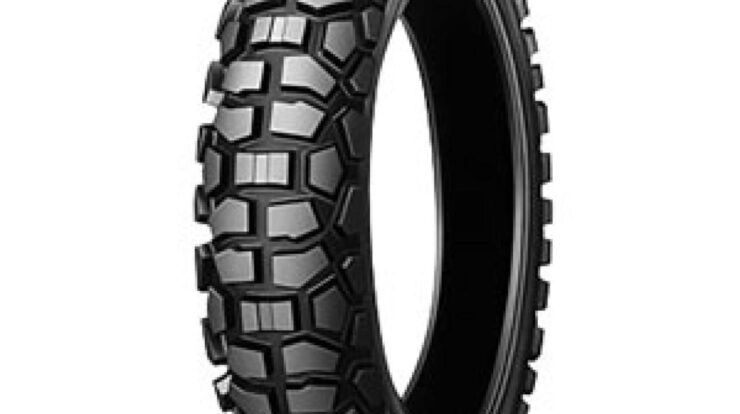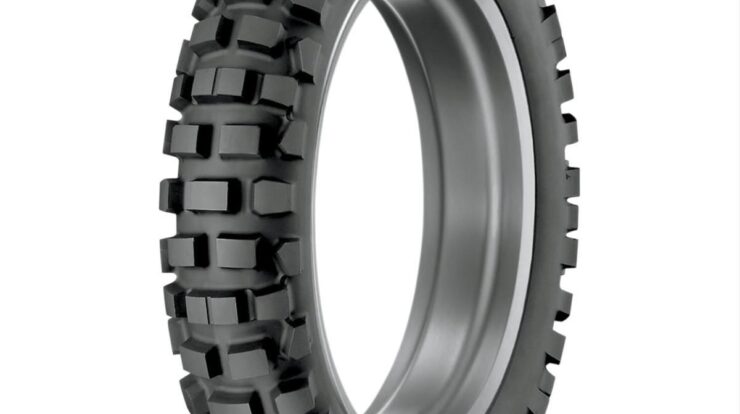In the realm of tires, dual sport tires stand out as the ultimate hybrid, seamlessly blending on-road comfort with off-road capability. Whether you’re an adventure rider seeking uncharted trails or a commuter navigating urban landscapes, dual sport tires offer a versatile solution that empowers you to conquer any terrain.
Delve into the world of dual sport tires as we explore their unique features, performance characteristics, and applications. Discover how these tires can enhance your riding experience and elevate your adventures to new heights.
Define and Describe Dual Sport Tires

Dual sport tires are a hybrid type of tire designed for both on-road and off-road riding. They provide a balance of performance on paved surfaces and unpaved trails.
Dual sport tires are commonly used on adventure motorcycles, which are designed for long-distance travel on a variety of terrain. They can also be found on some all-terrain vehicles (ATVs) and utility terrain vehicles (UTVs).
Benefits of Dual Sport Tires
- Versatility: Dual sport tires allow riders to transition between on-road and off-road riding without having to change tires.
- Improved traction: The knobby tread pattern of dual sport tires provides increased traction on unpaved surfaces, improving handling and stability.
- Durability: Dual sport tires are typically made from durable compounds that can withstand the rigors of off-road riding.
Drawbacks of Dual Sport Tires
- Reduced on-road performance: Dual sport tires may not perform as well as dedicated on-road tires on paved surfaces, especially at high speeds.
- Increased noise: The knobby tread pattern of dual sport tires can generate more noise than on-road tires.
- Shorter lifespan: Dual sport tires may have a shorter lifespan than dedicated on-road tires due to the increased wear and tear from off-road riding.
Features and Characteristics of Dual Sport Tires

Dual sport tires combine the features of both on-road and off-road tires, making them versatile for a wide range of riding conditions. Understanding their unique characteristics helps riders choose the best tires for their specific needs.
Tread Patterns and Designs
Dual sport tires feature distinctive tread patterns designed to provide grip on both paved and unpaved surfaces. They typically have larger tread blocks in the center for stability on the road, while the outer edges have more aggressive patterns for off-road traction.
Compounds
The compounds used in dual sport tires vary depending on the intended use. Softer compounds provide better grip but wear out faster, while harder compounds last longer but offer less traction. Some tires use a dual-compound design, with a softer compound on the edges for grip and a harder compound in the center for durability.
If you’re considering a pair of wireless earbuds, you might be wondering whether to choose the Samsung Earbuds Pro or the Beats Fit Pro. Both models offer excellent sound quality, but they have different strengths and weaknesses. To help you make an informed decision, check out this comparison: Samsung Earbuds Pro vs.
Beats Fit Pro . Also, if you’re experiencing an issue where one Bose earbud is louder than the other, here’s a troubleshooting guide: One Bose Earbud Louder Than Other .
Sizing and Compatibility
Dual sport tires are available in a range of sizes to fit different motorcycles. When selecting tires, it’s crucial to ensure compatibility with the motorcycle’s wheels and suspension. Improperly sized tires can affect handling, stability, and safety.
Performance Considerations for Dual Sport Tires
Understanding the performance characteristics of dual sport tires is crucial for riders who venture on both paved and unpaved roads. These tires offer a balance between on-road handling and off-road capabilities, but their performance varies depending on the specific terrain and riding conditions.
Handling Characteristics
- On-Road:Dual sport tires provide stable and predictable handling on paved roads. Their road-oriented tread patterns minimize noise and vibrations, ensuring a comfortable ride. However, they may not offer the same level of grip and cornering performance as dedicated street tires.
- Off-Road:The aggressive tread blocks and knobby design of dual sport tires provide enhanced traction on loose surfaces such as dirt, gravel, and sand. They allow riders to navigate off-road trails with confidence, offering a balance between grip and durability.
Durability and Longevity, Dual sport tire
- On-Road:Dual sport tires typically have a longer tread life on paved roads compared to off-road tires. The harder compound and closer tread spacing resist wear and tear, resulting in a longer lifespan.
- Off-Road:The softer compound and more aggressive tread pattern of dual sport tires may reduce their longevity on rough terrain. However, they offer increased durability compared to street tires, making them suitable for occasional off-road adventures.
Fuel Efficiency and Noise Levels
- Fuel Efficiency:The road-oriented tread pattern of dual sport tires minimizes rolling resistance, which can contribute to improved fuel efficiency compared to off-road tires.
- Noise Levels:The aggressive tread blocks of dual sport tires can generate more noise than street tires on paved roads. However, the noise levels are generally within acceptable limits and may not be noticeable to all riders.
Applications and Use Cases for Dual Sport Tires
Dual sport tires offer versatility and adaptability, catering to a range of vehicles and riding styles. They excel in scenarios that demand both on-road stability and off-road capability.
These tires are ideal for adventure riding, where riders embark on extended journeys that traverse diverse terrains. Their ability to handle both paved roads and unpaved trails makes them a suitable choice for exploring remote areas and tackling challenging conditions.
Commuting
Dual sport tires can also be beneficial for commuters who regularly encounter a mix of road surfaces. They provide a balance of grip and comfort on paved roads, while also offering enhanced traction when encountering rougher terrain or unexpected obstacles.
Light Off-Roading
For light off-roading enthusiasts, dual sport tires provide a compromise between knobby tires designed for extreme off-road conditions and street tires optimized for paved roads. They offer sufficient grip and stability on dirt trails and gravel roads, allowing riders to venture off the beaten path without sacrificing on-road performance.
For those torn between Samsung’s Earbuds Pro and Beats’ Fit Pro, this comparison offers a comprehensive breakdown of features, sound quality, and fit. On a different note, if you’re experiencing an imbalance in volume with your Bose earbuds, this guide provides troubleshooting tips to resolve the issue.
Specific Tire Models and Applications
Examples of specific dual sport tire models include:
- Continental TKC 80:Designed for adventure riding, providing a balance of on-road and off-road performance.
- Michelin Anakee Adventure:Optimized for long-distance adventure touring, with a focus on durability and grip on varied terrains.
- Shinko 705:A popular choice for commuters and light off-roading, offering a balance of on-road stability and off-road traction.
Maintenance and Care for Dual Sport Tires
Maintaining your dual sport tires is crucial for ensuring optimal performance and extending their lifespan. Proper inflation, balancing, and alignment are essential aspects of tire maintenance. Additionally, regular inspections and proper storage and handling practices contribute to the overall care of dual sport tires.
Inflation
- Check and adjust tire pressure regularly, following the manufacturer’s recommended specifications.
- Underinflation can lead to increased wear, reduced traction, and handling issues, while overinflation can result in a harsh ride and decreased grip.
- Use a reliable tire pressure gauge and inflate tires when they are cold, as pressure increases with temperature.
Balancing and Alignment
- Tire balancing involves distributing weight evenly around the tire to minimize vibrations during riding.
- Alignment ensures that the tires are properly aligned with the wheels, which affects handling and stability.
- Have your tires balanced and aligned by a qualified mechanic if you experience excessive vibrations or handling problems.
Inspection
- Inspect tires regularly for signs of wear, damage, or punctures.
- Check for uneven wear patterns, cuts, or bulges, which can indicate alignment issues or damage.
- Remove any embedded objects, such as nails or screws, and have them repaired promptly.
Storage and Handling
- When not in use, store dual sport tires in a cool, dry place away from direct sunlight and moisture.
- Avoid stacking tires on top of each other, as this can deform them.
- If storing tires for an extended period, inflate them slightly above the recommended pressure to prevent flat spots.
Conclusive Thoughts

Dual sport tires are the embodiment of versatility, providing a balance of on-road stability and off-road grip. Their rugged construction and adaptability make them the perfect choice for riders who demand performance in diverse conditions. Whether you’re exploring remote trails or commuting through city streets, dual sport tires empower you to navigate any terrain with confidence and control.
FAQ
What types of vehicles use dual sport tires?
Dual sport tires are commonly used on motorcycles, particularly adventure bikes, dual-sport motorcycles, and some enduro models.
What are the advantages of dual sport tires?
Dual sport tires offer a combination of on-road stability and off-road traction, making them suitable for a wide range of riding conditions. They provide good grip on paved roads while maintaining adequate traction on dirt, gravel, and light trails.
What are the disadvantages of dual sport tires?
Compared to dedicated on-road or off-road tires, dual sport tires may compromise slightly on performance in extreme conditions. They may not provide the same level of grip as pure off-road tires on rough terrain, and they may not offer the same level of comfort and efficiency as pure on-road tires on smooth surfaces.

